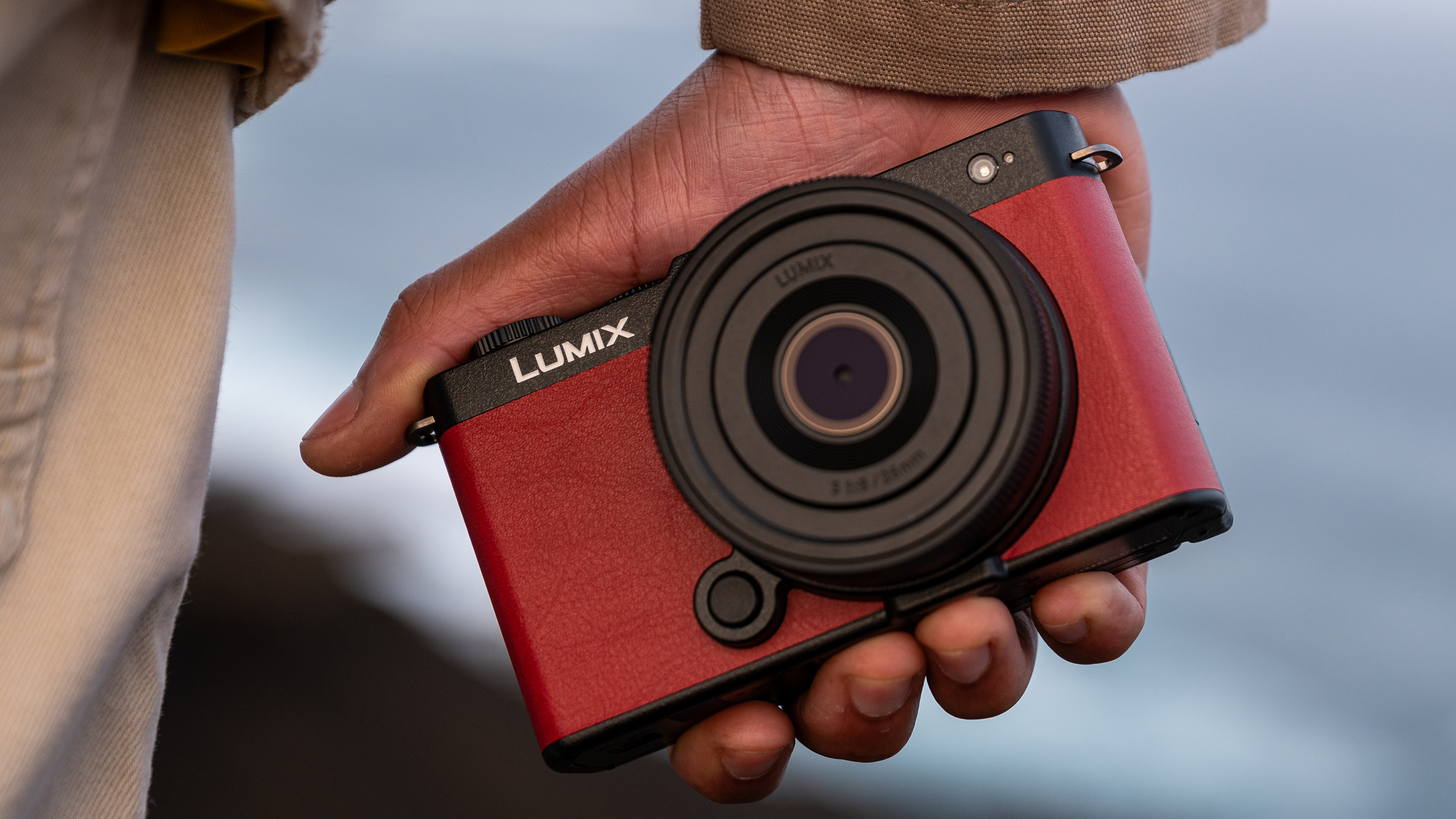Shoot like a pro: Furry Frames
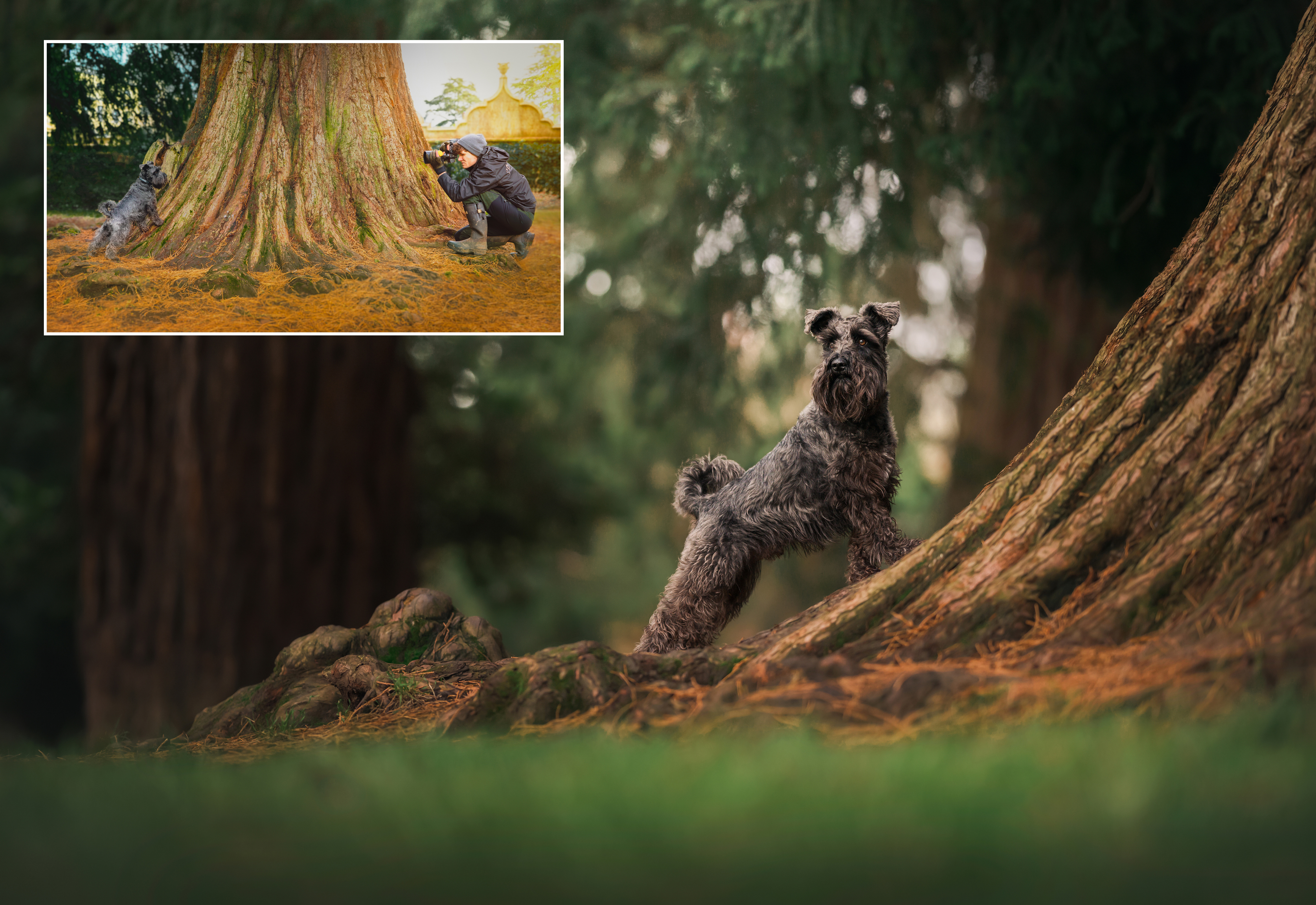
For animal-loving photographers, having a furry friend posing in front of the camera may seem like a dream come true. However, in practice, it can be a lot more challenging than it appears. Animals are notoriously difficult subjects to work with, not only in photography, and have a shorter attention span than their human counterparts. And, whereas communication with your model is essential when taking human portraits, it is far more of a challenge to direct your animal subjects when photographing them.
Today, I am meeting Matt Elliott, an experienced pet photographer based in Bristol, England. Known for his ability to create photographs that capture the unique personalities of pets and the special bond between them and their owners, Matt is a pet owner himself, meaning that he understands the profound impact animals have on our lives. Matt has captured countless special moments with humans and their pets – from dogs and cats to horses and even snakes – so I can’t wait to see what he has in store for us today.
Before setting off to meet Matt, I notice that most of the images on his website have been taken outdoors. With the unreliable British weather adding yet another unpredictable element to the behavior of his canine models, I wonder whether shooting in a studio environment, where variables such as the background and lighting can be easily controlled, might make his task easier. Being outdoors brings other distractions, such as other animals that could disrupt the pet’s attention.
“I always ensure that the animals in front of my lens are comfortable and, more importantly, safe”
Matt Elliott
I am curious to see how he copes with any distractions and ask him why he takes on such challenges. Matt warns me that I should come prepared for the weather, wearing rainproof clothes and sturdy footwear. Conditions in the few days before our shoot in early December have been a mixture of rain and cold temperatures. Matt suggests that I join him on a shoot either early in the morning or towards the end of the day, advising me that these are the best times to get the perfect lighting conditions for atmospheric dog portraits.
Today’s subject is Matt’s own dog Merlin, a Miniature Schnauzer. Merlin is used to being in front of the camera and has even featured as a model for some pet brands. I figure that this makes him the perfect subject to demonstrate Matt’s photographic skills, though when I turn up to meet him, he seems particularly excitable – I’m hoping my arrival proves to be the only distraction of the day.
After meeting Matt, we get in his car and head to our first destination. During our ride, the topic of conversation turns to his favorite photographic gear. Matt tells me that he’s a Sony shooter, though he has previously owned some Nikon cameras, and has now settled on the Sony A7R V. We arrive at Ashton Court, a vast, open park on the city’s western outskirts, and Matt puts on his wellies and gloves and grabs his camera bag.

“I often come here to shoot, it has lots of different spots to capture the dogs,” he explains. “When working with reactive dogs, I’ll try to find a quieter location. Sometimes, we’ll choose to use a secure dog field or a woodland somewhere else.” Matt’s top priority is to ensure that the dog feels comfortable and safe during the shoot. “I always ensure the animals in front of my lens are comfortable and, more importantly, safe,” he says. Before heading deeper into the park, Matt stops in front of the Ashton Court mansion, an impressive historical building.
“Let’s stay here to take the first shots,” he says. Merlin gets into place and Matt positions himself a bit further away to frame the scene from a side angle. Suddenly, out of nowhere, there is a piercing noise, which directly catches both Merlin’s attention and mine too. Turning round to locate the sound, I see that Matt has blown a fox whistle to grab Merlin’s attention. It works as he directs his gaze towards the camera.
“When photographing dogs, I carry lots of noisy accessories with me. It works with most but can get tricky when I have a well-trained dog as a subject. They are trained to only pay attention to their owner and to ignore everything else happening around them. That certainly makes it a challenge.”
I ask Matt how he sees the role of the dog owner during a photo shoot. “Dogs have a connection to their owners in a way I can’t do, so the owner acts as a link between me and the dog,” he says.
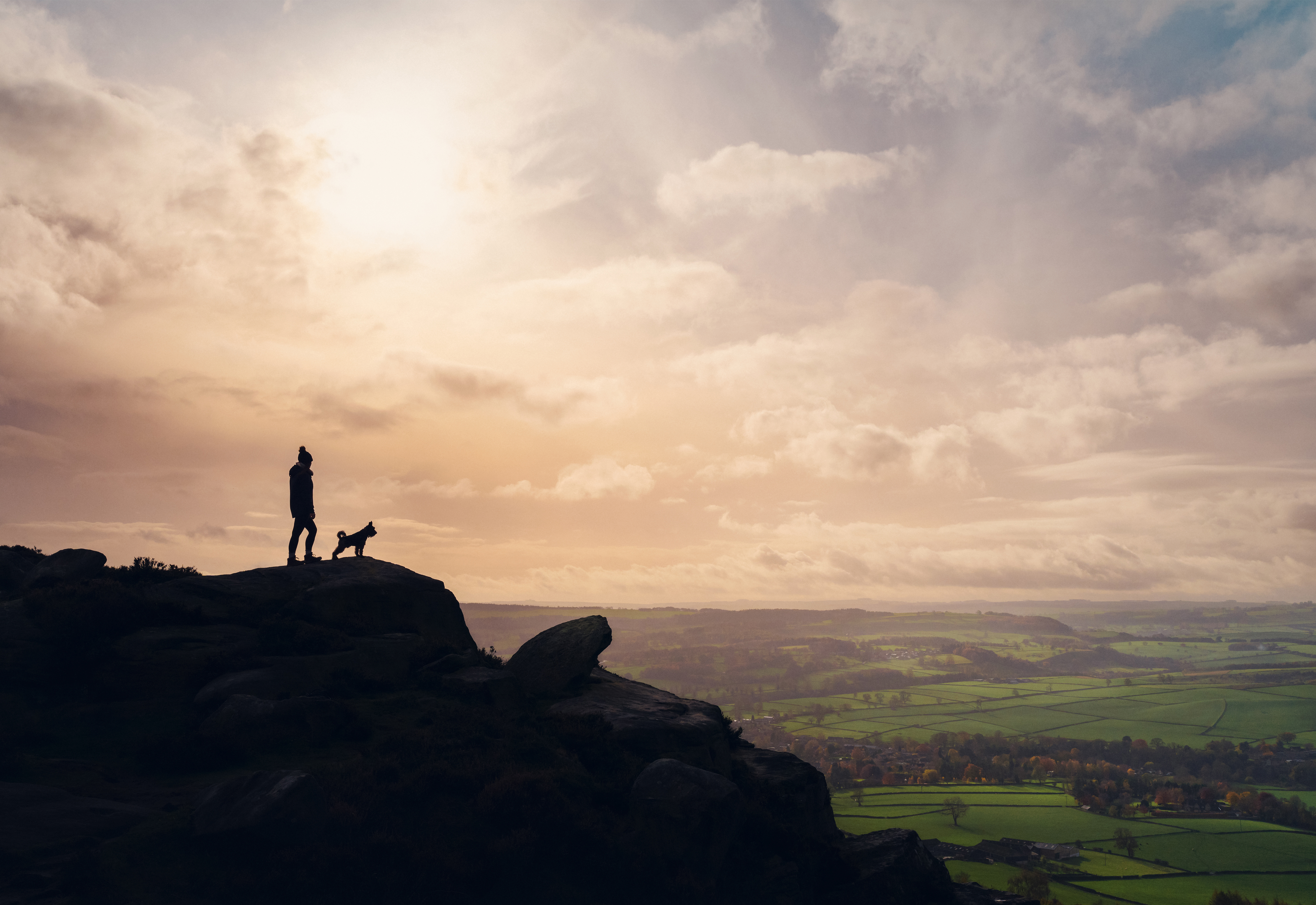
I ask him why he shoots mainly outdoors. “I prefer to photograph animals in a natural environment where I believe they can feel much more relaxed,” he replies.
Like many people during the pandemic lockdowns, Matt, his wife and Merlin took the opportunity to explore their local area, discovering many locations that he now uses for shoots. He believes that the photographer’s approach and skill in capturing the dog’s character and personality are more important than the location. Nonetheless, Matt explains that he often involves the owner in the decision-making process for the location.
“Sometimes, there are places that hold special meaning for both the owner and dog, so I will suggest going there. At the end of the day, I want to create a fun, relaxed experience and capture precious moments, so the owner can look at the images, remember them and maybe even get the feeling back from that day.”
As we walk through the park, we come across some big pine trees, where Merlin almost seems to know what he’s supposed to do, getting in position for a few poses. “Not all dogs I work with can do tricks or special commands and that’s not a bad thing.” However, after the first few shots, Merlin’s attention wanes and he’s now more focused on the squirrels in the tree opposite. Matt knows a few tricks to get Merlin’s attention back and it’s not long before he is looking straight at the camera lens again.

“It’s a question of patience. Some dogs have a longer attention span than others, and it’s different every time.” When a dog is visibly stressed or loses interest, Matt often suggests going for a short walk with the owner. “After that, we continue the shoot and check if the dog is more relaxed. If they aren’t, it soon becomes noticeable in the images.” Even in big productions and commercials, you can see whether a dog is happy and relaxed or not. Matt has worked with dog trainers, learning first-hand tips and tricks on how to handle canine models.
Merlin has done a great job today and, as we head back to grab a well-deserved coffee, I ask about Matt’s client base and marketing strategies. He explains that most of his custom comes from word-of-mouth recommendations. “A lot of customers find their way to me through previous clients. Dog owners have a lot of connecting points with other owners, such as the park, the vet and so on.”
This makes personal referrals important for his business. “Reviews from previous clients are the best advertisement for my business, they help to establish trust in my service.” Apart from this, he has an online blog, where he shares insights on photo sessions, giving a glimpse of how he works. Matt also offers high-quality print products.
“There are so many quick and easy print services available these days, I want to offer my clients products that are really special and will last a lifetime.” When clients book a full session with Matt, they receive a credit towards his product menu. “This way, my customers can choose one of these special products to hang proudly on their wall.”
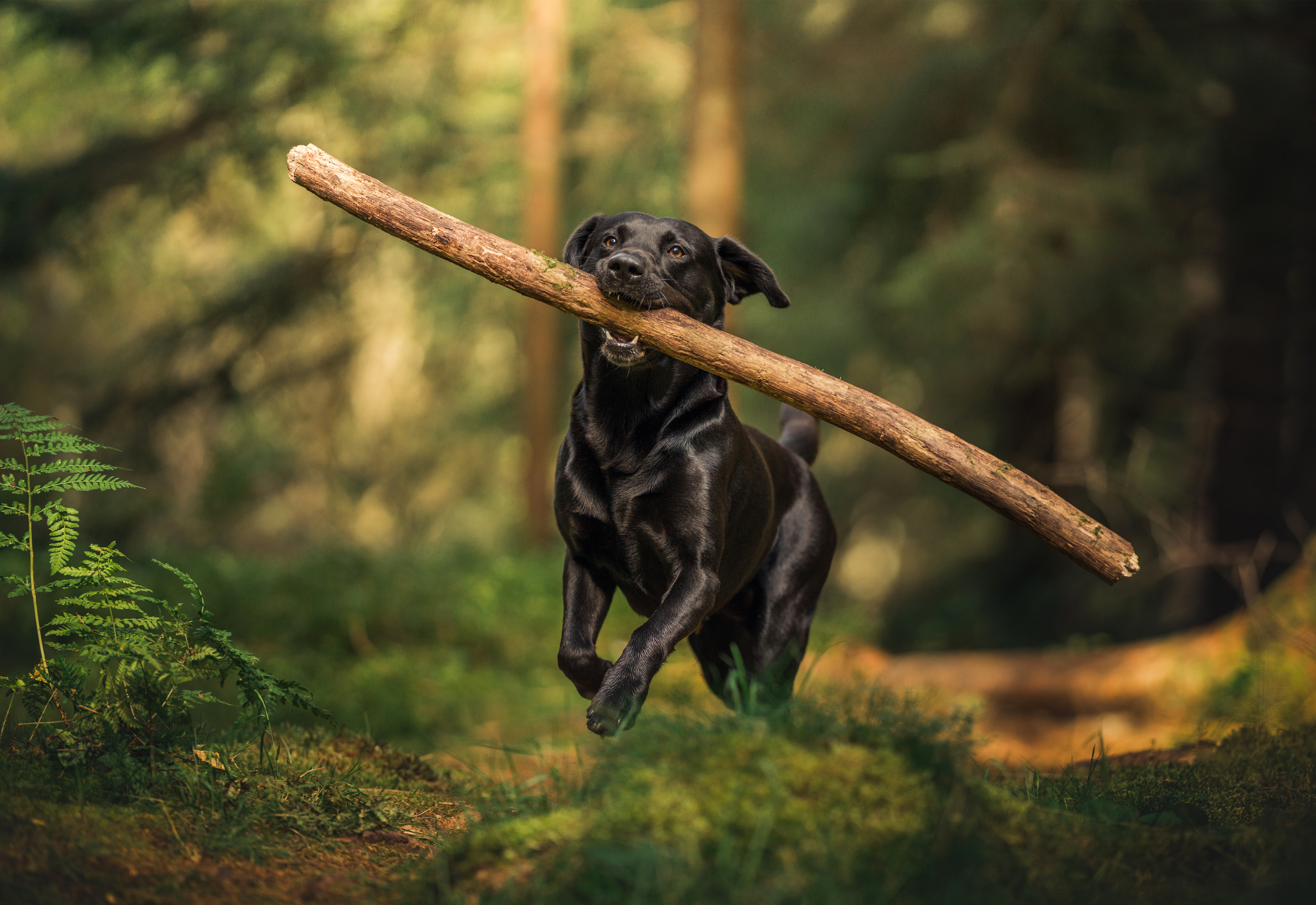
Before I leave, Matt tells me the importance of his job and why he needs to be flexible from time to time. “I had a client booking a session with me, she mentioned that her dog was quite ill. I had to organize a last-minute shoot to photograph her beloved pet. It was a tough but important shoot with lots of emotions.” I get the feeling that the fact our furry friends don’t have as much time on Earth as we humans do is part of what drives Matt to be so passionate about creating not just photographs but memories too.
Matt says he prefers his sessions with oldies to working with very young dogs. “At first, you think ‘Aww, cute puppies!’ but the reality is that they can be the trickiest of all. Fortunately, I’ve got lots of patience and am more than up for the challenge.”
Over the past three years, Matt has worked with a client that finds foster homes for dogs and he also helps raise money for the Forest of Dean Dog Rescue. “A few months before Christmas, we’ll discuss possible ideas for this year’s charity Christmas card and what props we may need.” For this session, Matt prefers to set up a portable studio in the client’s home. “I’ll often use various stock images to create the background for the scene and bring the shot to life in Photoshop. In the last shoot, we had 15 Cavaliers! It’s a challenge to coordinate so many dogs but it’s worth it.”
Matt’s shooting setup
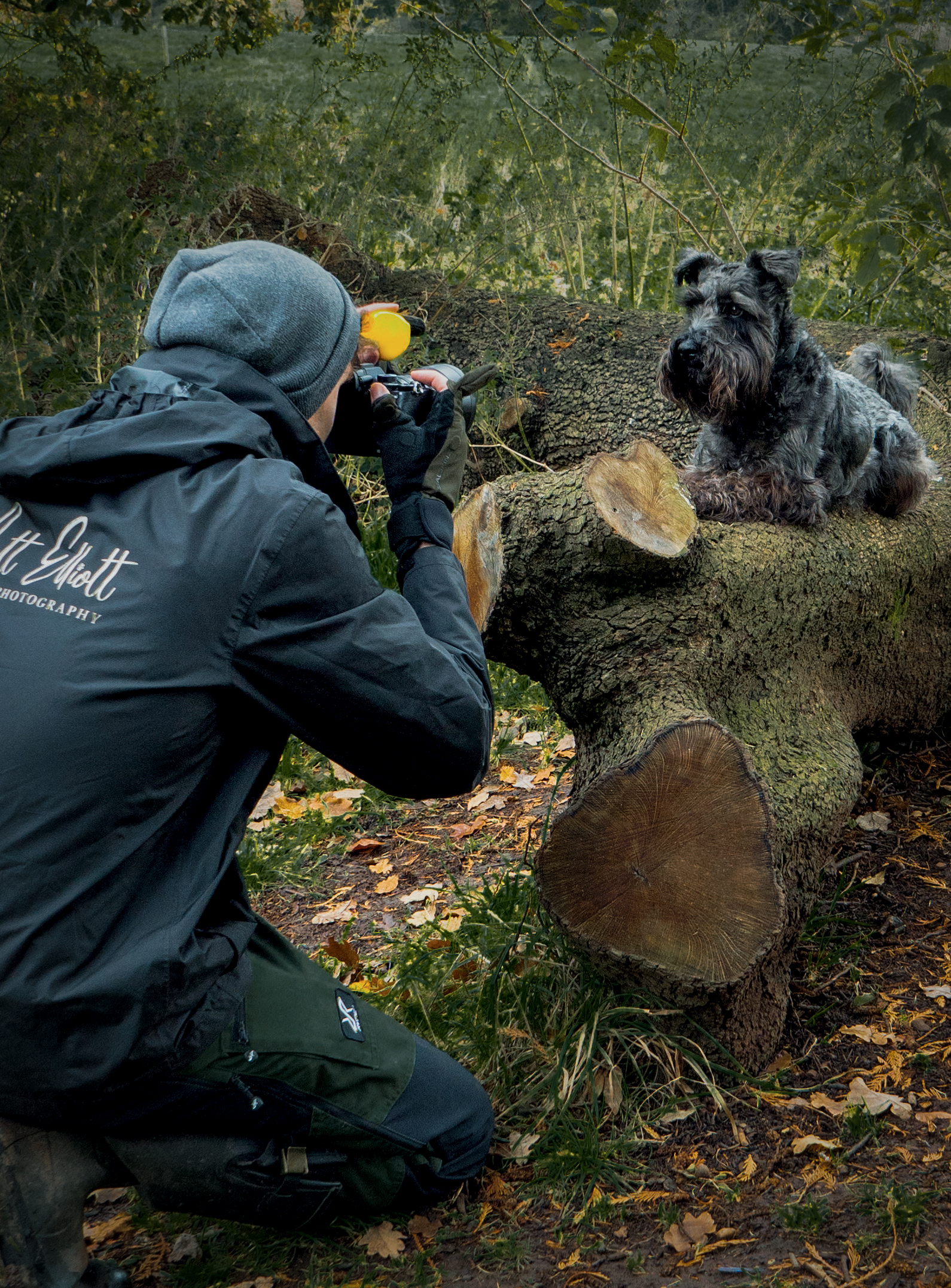
1) Accurate focus
The Sony A7R V is a mirrorless camera boasting a 61MP sensor and a powerful autofocus system, which is vital for Matt’s work. The advanced eye-detection AF feature comes in handy when capturing active dogs. If they won’t stay still for long, the focus follows the eyes of the subject through the frame to ensure that the photographs remain sharp and clear. In this particular scene, Matt opted for a fast shutter speed of 1/400sec so he could capture Merlin without any motion blur.
2) Open aperture
Matt prefers working with prime lenses, for their unmatched precision and sharpness. Here, he uses a 135mm optic that offers a constant open aperture of f/1.8. This f-stop number creates a shallow depth of field, blurring the background and distracting elements. This technique ensures the focus remains on the subject, while adding atmosphere to the frame.
3) Sound device
Matt uses a collection of items that produce distinctive sounds, such as whistles and squeaky toys, to grab the dog’s attention. To keep the dog interested during the session, Matt places these items close to his camera and changes them throughout the shoot. He even has a couple of items that can produce sounds with his mouth, such as the duck call, meaning that he can keep both hands holding the camera steady while capturing the shot.
4) Eye-level perspective
The main purpose of a portrait is to establish an emotional link between the subject and the viewer. To achieve this, Matt positions himself at Merlin’s eye level and by doing so, he sets the tone for a more intimate portrait. This approach allows you to see the pet’s unique personality, focusing on their individuality and building a deeper emotional link.
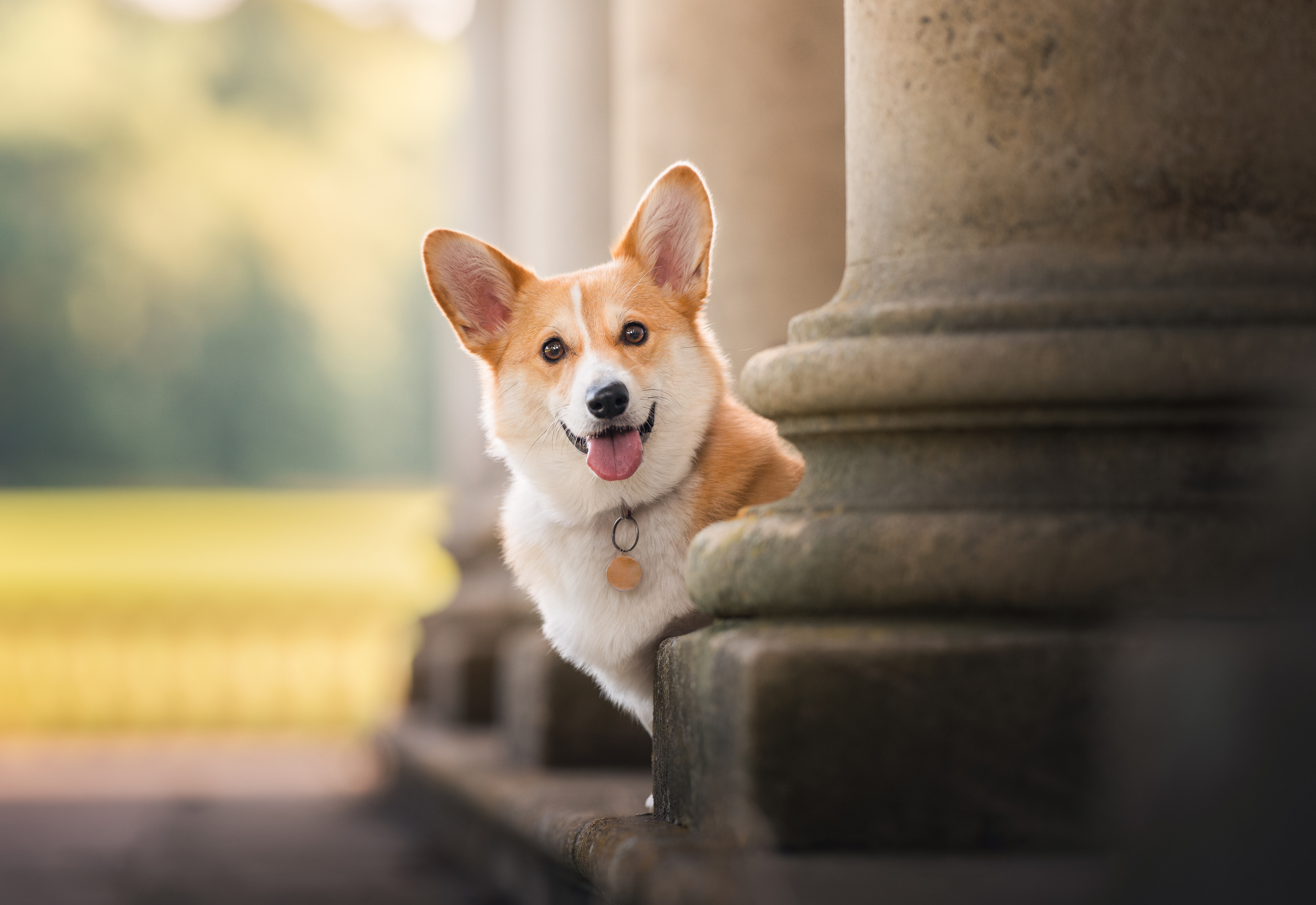
Gaining their trust
Pro tip: How to ensure a safe environment for pets
“As a dog owner myself, I understand the concerns that my potential clients may have. Being transparent about how a photography session with you looks is important for building trust and, without this information, they may not book one. One question I’m often asked is whether dogs need to be off-leash during the session. Around half of my sessions take place with dogs on a leash. The dog’s safety and comfort are my top priorities on every shoot so I work with whatever makes them feel most comfortable and take things at their pace. I can always remove the leash in post-processing if it makes a better photo.
“Every dog is different and makes a great subject in its own right, so it’s important to be able to deal with a range of behaviors. That’s why I’ve worked with dog trainers and behaviorists in the past. With over five years of experience and lots of patience, I know that ensuring the photo session is relaxed, enjoyable, and stress-free is crucial for both the dog and the owner.”
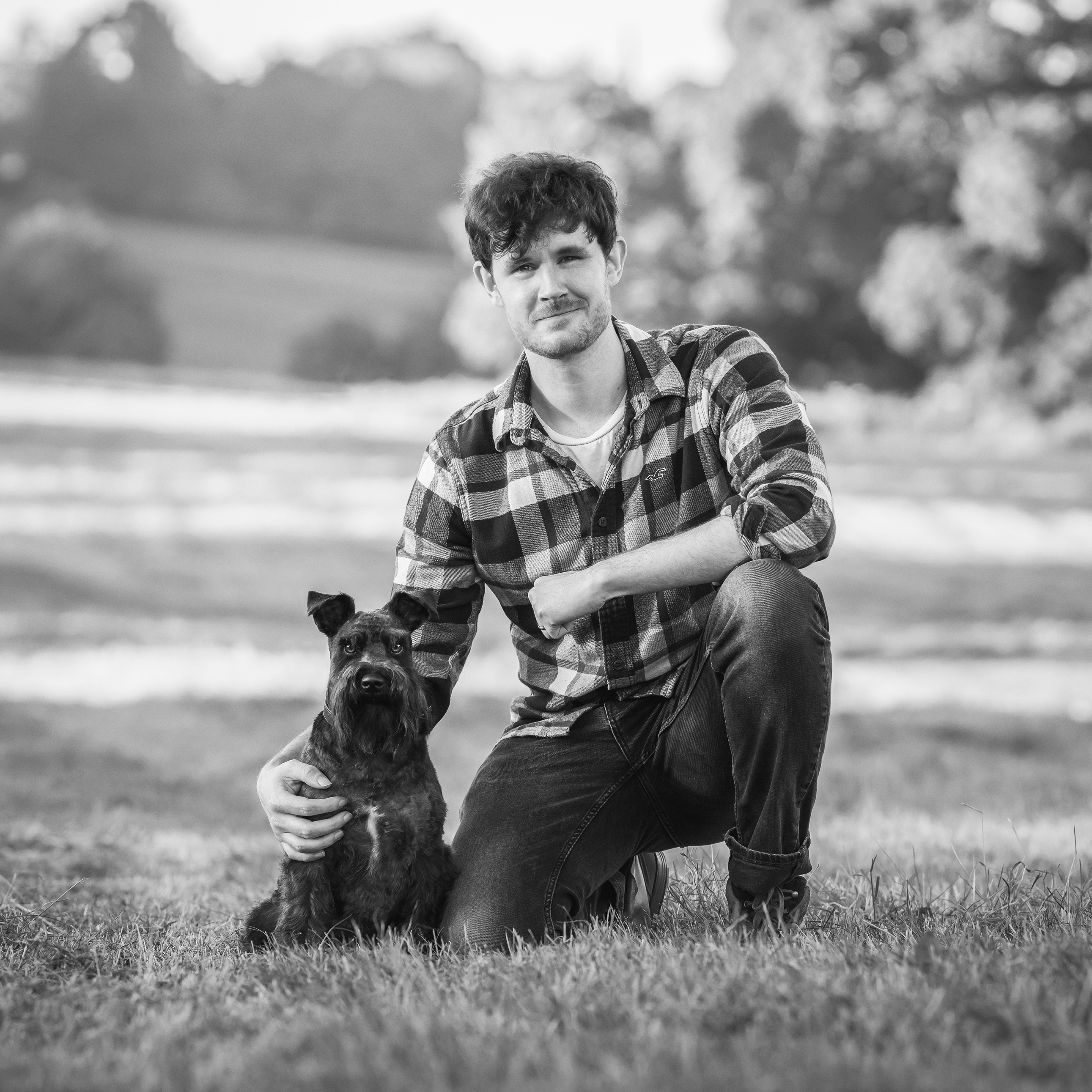
As a lifelong dog owner, Matt Elliott has developed his passion for pet photography, honing his skills by capturing the distinct personalities of the animal kingdom and shooting everything from tiny Chihuahua pups to horses. Based in Bristol, Matt offers his pet photo sessions across the southwest of England and beyond and has worked with a variety of expert dog trainers and animal behaviorists to strengthen his expertise in the field. His priority in each session is to ensure that every animal is safe and comfortable.
Matt’s favorite gear
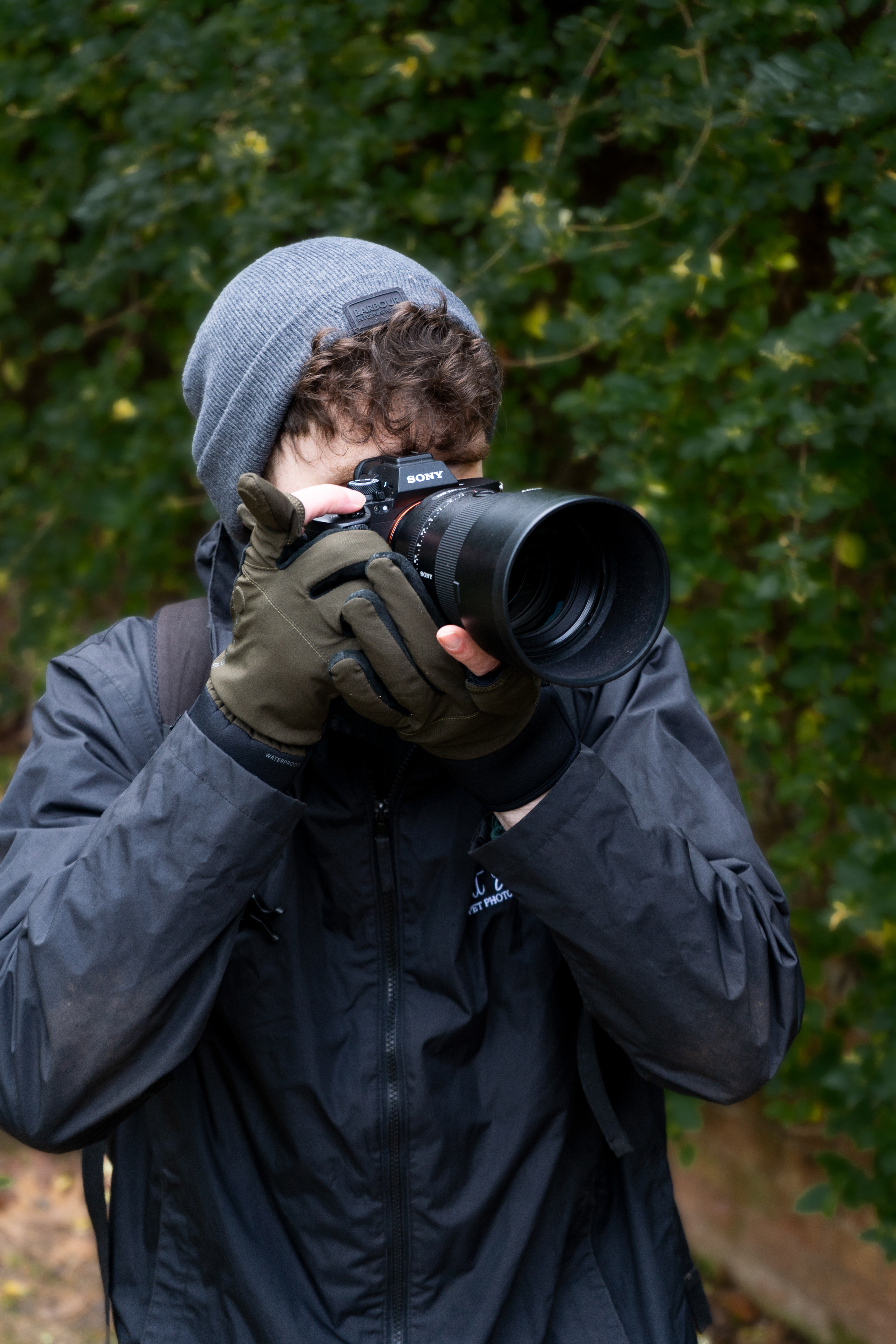
1) Sony A7R V
The AI-powered subject recognition autofocus system is truly remarkable with lightning-fast identification as well as reliable tracking capabilities. With its larger buffer, the A7R V is an effective tool for prolonged bursts of shooting.
2) Sony FE 135mm f/1.8 GM
Weighing just under 1kg, this lens may be fairly hefty, but it delivers unparalleled all-round performance and stunning bokeh. For capturing tight head and shoulder portraits, the 135mm focal length is a clear choice.
3) Sony FE 35mm f/1.4 GM
It’s a pricey lens but worth every penny, so it’s worth buying second-hand. The lens is easy to handle, thanks to the weighted declickable aperture ring, smooth focus ring and customizable Focus Hold button.
4) Tamron 70-180mm f/2.8 Di III VXD
This versatile lens is Matt’s go-to choice for events. A clever design packs the maximum focal length in a compact body while maintaining the same fast and constant f/2.8 aperture as previous models.
5) Sony FE 85mm f/1.8
This prime lens is an alternative to Sony’s GM lens, offering a lighter and more affordable option without compromising on quality. An ideal choice for handheld shooting, this is Matt’s latest purchase for his video work.
6) Weatherproof clothing
Wellington boots for muddy terrain and a water-repellent jacket for situations where laying on the ground gives the perfect perspective. Matt has incorporated his branding into his clothing for visibility.
3 top tips from MPB

Get the most out of your urban portraiture with MPB's top tips:
1) Optimize your gear
Choose a camera with precise autofocus and pair it with fast prime lenses like a 50mm f/1.8 for sharp focus and appealing background blur. This combo ensures clarity, which is crucial when dealing with active pets.
2) Capture with insight
Exercise patience to understand pet behavior. Equip yourself with knowledge about their favorite toys or treats to elicit genuine expressions. Use gear that allows you to get down to their eye level for compelling perspectives.
3) Gear for comfort
Select a familiar location to ease pets and optimize your camera settings for natural light. Indoors, position pets near windows; outdoors, leverage the golden hours for warm, flattering light. Equip yourself to create a stress-free environment, enhancing your ability to capture authentic and captivating portraits.
Get the Digital Camera World Newsletter
The best camera deals, reviews, product advice, and unmissable photography news, direct to your inbox!
Digital Camera World is one of the leading authorities on camera and photography news, reviews, techniques, tutorials, comparisons, deals and industry analysis. The site doesn't just specialize in cameras, but all aspects of photography, videography and imaging – including camera phones, gimbals, lenses, lighting, editing software, filters, tripods, laptops, printers, photo books, desks, binoculars and more.
Whether you're using, looking to buy or trying to get the most out of a compact camera, action camera, camera drone, cinema camera, beginner camera or professional camera, Digital Camera World has a roster of experts with combined experience of over 100 years when it comes to cameras, photography and imaging.

